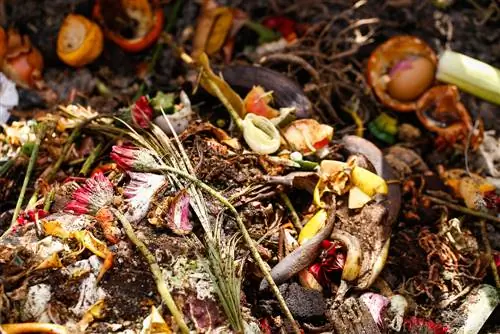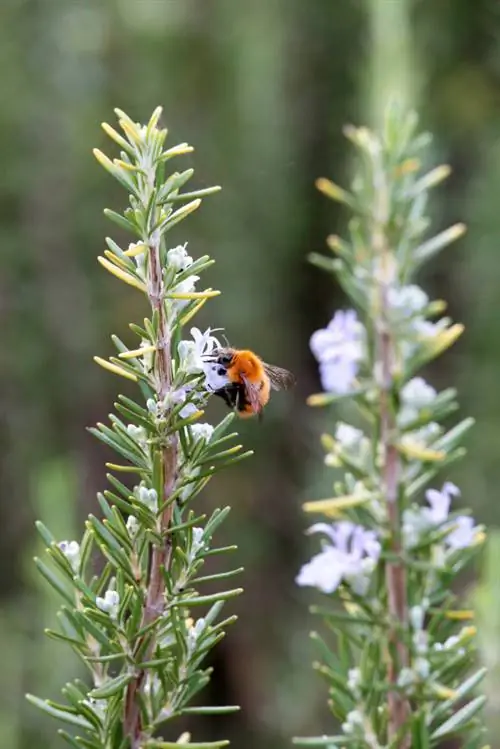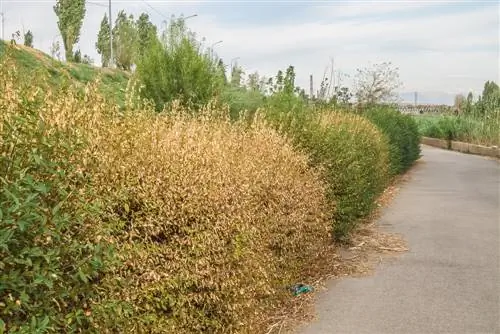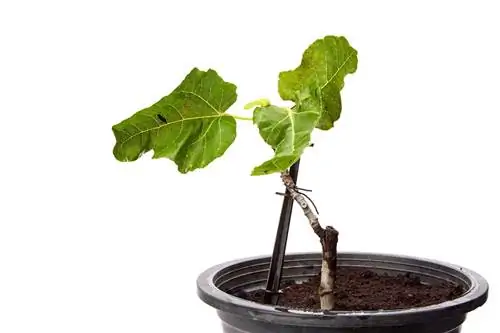- Author admin [email protected].
- Public 2023-12-16 16:46.
- Last modified 2025-01-23 11:21.
The compost can quickly become a nuisance if the wrong degradation processes take place inside. If you pay attention to a few aspects when composting, you can prevent unpleasant smells.
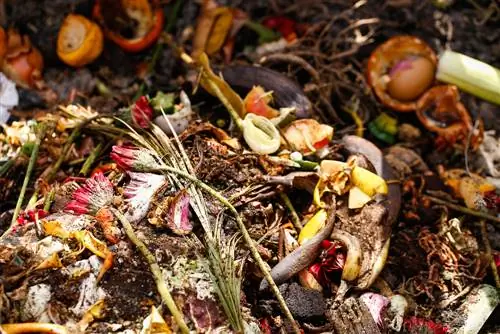
Why does my compost stink and what can I do about it?
Compost stinks when putrefactive processes take place, e.g. due to too much wet organic waste, material that is too dense or a waterproof substrate. To avoid odors, dispose of kitchen waste daily, turn over compost if necessary and add dry material and rotting accelerators.
Processes in compost
Unpleasant smells indicate that undesirable processes are taking place in the compost. The compost needs a balanced level of moisture and good aeration so that the right bacteria and yeast break down the organic material. The microorganisms that are responsible for the decomposition processes need oxygen. In a material that is too wet and in which anaerobic conditions exist, putrefaction processes take place. When the compost begins to rot, it creates unpleasant smells. A properly functioning compost does not smell unpleasant.
These are reasons for smelly compost:
- too much wet organic waste
- material piled up too tightly
- a waterproof substrate in the compost
Prevention and control
Put kitchen waste in the compost every day so that wet biomass can dry out. If you store kitchen waste in a bucket, the liquid collects at the bottom and promotes putrefactive processes. Fruit flies also spread quickly. You should roll particularly wet kitchen waste in newspaper, which will decompose in the compost. Do not use colored printed paper.
You can eliminate bad smells on the surface with a handful of lime or stone dust. Alternatively, you can add a thin layer of soil or sand to the compost. The substrate absorbs the liquid. If you have a second compost with a mature substrate, you can cover the fresh compost with this soil.
To stop the formation of ammonia gases during the rotting processes, you should regularly shift the compost or loosen it with a compost fork. This ensures a good oxygen supply. Add dry clippings, horn shavings (€52.00 on Amazon) or rock dust to the compost to support rotting.
Rotting Accelerator
Compost accelerators are an effective way to support rotting in compost. An ecological accelerator is a mixture of sugar and yeast dissolved in lukewarm water. The yeasts decompose the organic material and generate a lot of heat. Within a short time, temperatures between 60 and 70 degrees Celsius arise in the compost. During this hot rotting process, the degradation processes occur particularly quickly. Make sure that the substrate is only as moist as a squeezed sponge.

